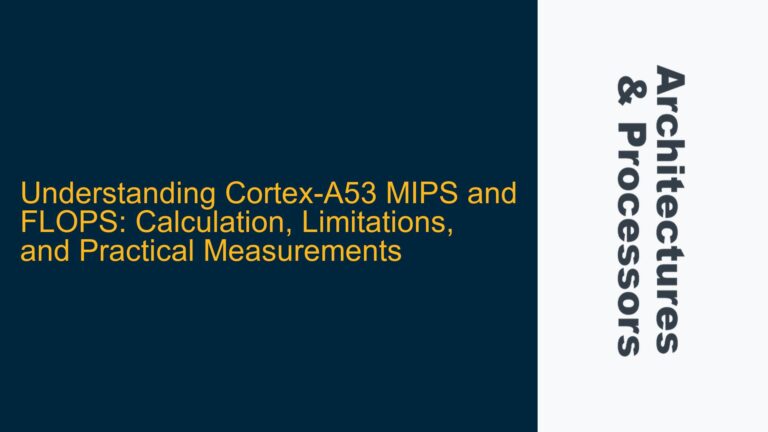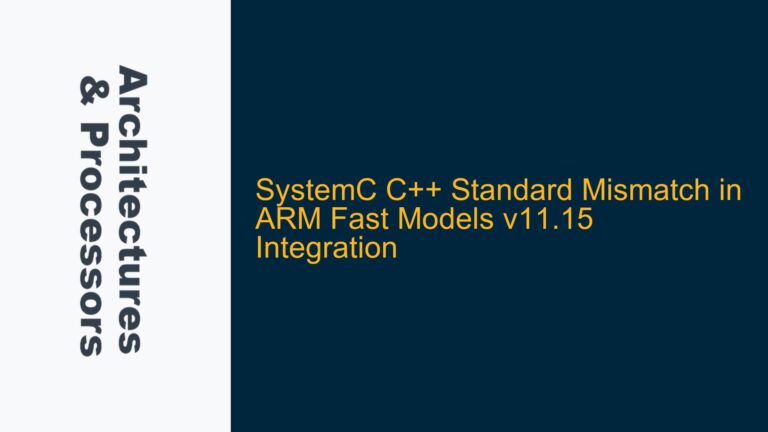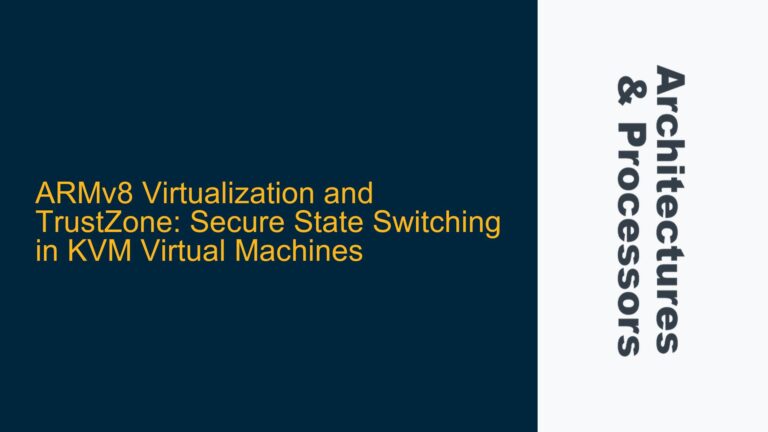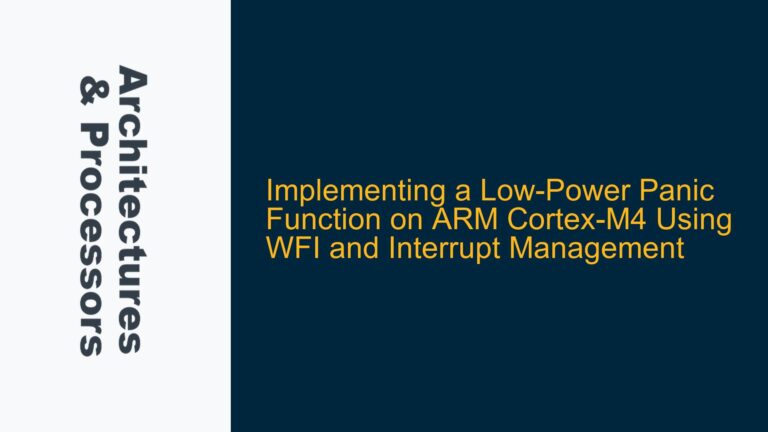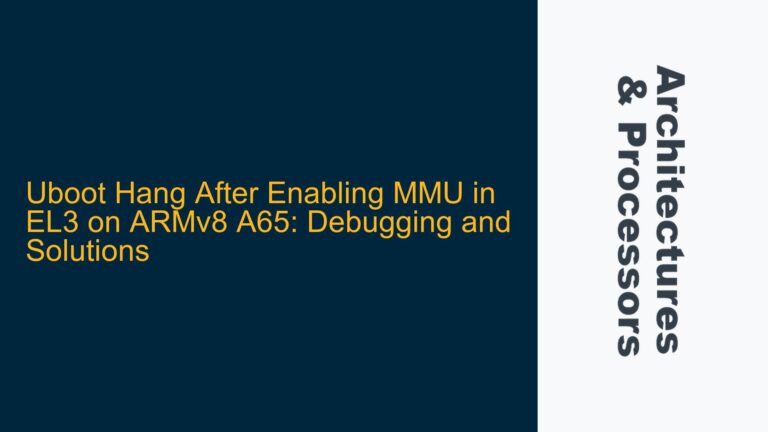CoreSight TMC Buffer Level Mismatch During Trace Capture
The CoreSight Trace Memory Controller (TMC) is a critical component in ARM-based systems for capturing and managing trace data, which is essential for debugging and performance analysis. One of the key registers in the TMC is the Current Buffer Level (CBUFLEVEL), which indicates the amount of trace data stored in the buffer. However, discrepancies between the CBUFLEVEL value and the actual trace data captured can lead to confusion and misinterpretation of the trace data. This issue is particularly evident when the CBUFLEVEL register reports a value that does not align with the expected amount of trace data, as seen in the example where CBUFLEVEL is 0x12 (18 in decimal) but the actual trace data captured is 0x60 bytes (96 in decimal). This discrepancy raises questions about the correct interpretation of the CBUFLEVEL register and the underlying mechanisms of trace data capture in the TMC.
The CBUFLEVEL register is designed to provide the current level of the TMC buffer in 32-bit words. This means that each unit in the CBUFLEVEL register corresponds to 4 bytes of trace data. Therefore, if the CBUFLEVEL register reads 0x12, it should theoretically indicate that 0x48 bytes (0x12 * 4) of trace data have been captured. However, in the observed scenario, the actual trace data captured is 0x60 bytes, which is significantly larger than the expected 0x48 bytes. This inconsistency suggests that there may be additional factors influencing the CBUFLEVEL value or the trace data capture process that are not immediately apparent from the specification alone.
To fully understand this discrepancy, it is necessary to delve into the architecture of the CoreSight TMC, the role of the CBUFLEVEL register, and the potential causes of mismatches between the reported buffer level and the actual trace data. This analysis will also explore the implications of such discrepancies on the accuracy of trace data interpretation and the steps that can be taken to resolve or mitigate these issues.
Misinterpretation of CBUFLEVEL Register and Trace Data Alignment
One of the primary causes of the discrepancy between the CBUFLEVEL register and the actual trace data captured is the potential misinterpretation of the CBUFLEVEL register’s value. The CBUFLEVEL register is intended to provide the current level of the TMC buffer in 32-bit words, but this does not necessarily mean that the trace data is always aligned to 32-bit boundaries. In some cases, trace data may be packed or aligned differently, leading to a mismatch between the CBUFLEVEL value and the actual trace data size.
For example, if the trace data is packed in a way that does not align with 32-bit boundaries, the CBUFLEVEL register may not accurately reflect the total amount of trace data captured. This can occur when the trace data includes variable-length packets or when the trace data is compressed. In such cases, the CBUFLEVEL register may report a value that corresponds to the number of 32-bit words used to store the trace data, but this value may not directly translate to the actual size of the trace data in bytes.
Another potential cause of the discrepancy is the presence of metadata or additional information in the trace buffer that is not accounted for in the CBUFLEVEL register. The TMC buffer may include metadata such as timestamps, event markers, or other diagnostic information that is stored alongside the trace data. This metadata can increase the total amount of data stored in the buffer without being reflected in the CBUFLEVEL register, leading to a mismatch between the reported buffer level and the actual trace data size.
Additionally, the TMC may use a circular buffer to store trace data, which can complicate the interpretation of the CBUFLEVEL register. In a circular buffer, the buffer level may not always correspond directly to the amount of trace data captured, especially if the buffer wraps around or if there are gaps in the trace data. This can result in situations where the CBUFLEVEL register reports a value that does not align with the expected trace data size, particularly if the buffer is not fully utilized or if there are delays in updating the CBUFLEVEL register.
Correcting CBUFLEVEL Interpretation and Ensuring Accurate Trace Data Capture
To address the discrepancy between the CBUFLEVEL register and the actual trace data captured, it is essential to take a systematic approach to troubleshooting and resolving the issue. The first step is to verify the interpretation of the CBUFLEVEL register and ensure that it is being read correctly. This involves confirming that the CBUFLEVEL register is being accessed at the appropriate time and that the value is being interpreted in the correct context. It is also important to ensure that the trace data is being captured and stored correctly in the TMC buffer, and that any metadata or additional information is being accounted for.
One approach to resolving the discrepancy is to use a combination of hardware and software techniques to ensure accurate trace data capture and interpretation. This may involve using hardware breakpoints or triggers to capture trace data at specific points in the program execution, and then using software tools to analyze the trace data and compare it with the CBUFLEVEL register value. This can help identify any inconsistencies or mismatches between the reported buffer level and the actual trace data size, and provide insights into the underlying causes of the discrepancy.
Another approach is to use the TMC’s built-in diagnostic features to monitor the buffer level and trace data capture process. The TMC may include features such as buffer overflow detection, trace data compression, or metadata insertion, which can affect the CBUFLEVEL register value. By enabling these features and monitoring their impact on the buffer level, it is possible to gain a better understanding of how the CBUFLEVEL register is being updated and how it relates to the actual trace data captured.
In some cases, it may be necessary to modify the trace data capture process to ensure that the CBUFLEVEL register accurately reflects the amount of trace data captured. This may involve adjusting the trace data alignment, modifying the buffer size, or changing the way trace data is packed or compressed. It may also be necessary to update the software tools used to analyze the trace data to ensure that they correctly interpret the CBUFLEVEL register value and account for any metadata or additional information in the buffer.
Finally, it is important to document any changes made to the trace data capture process and to validate the results to ensure that the discrepancy between the CBUFLEVEL register and the actual trace data captured has been resolved. This may involve running multiple test cases, comparing the results with expected values, and verifying that the trace data is being captured and interpreted correctly. By taking a systematic approach to troubleshooting and resolving the issue, it is possible to ensure accurate trace data capture and interpretation, and to avoid potential pitfalls in the debugging and performance analysis process.
In conclusion, the discrepancy between the CoreSight TMC’s CBUFLEVEL register and the actual trace data captured can be attributed to a combination of factors, including misinterpretation of the CBUFLEVEL register, trace data alignment issues, and the presence of metadata or additional information in the buffer. By taking a systematic approach to troubleshooting and resolving the issue, it is possible to ensure accurate trace data capture and interpretation, and to avoid potential pitfalls in the debugging and performance analysis process. This involves verifying the interpretation of the CBUFLEVEL register, using hardware and software techniques to monitor and analyze the trace data capture process, and making necessary adjustments to the trace data capture process to ensure that the CBUFLEVEL register accurately reflects the amount of trace data captured.

